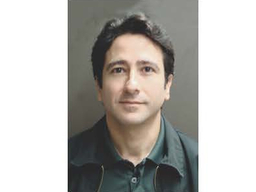Differential Equations Seminar
Dr. Carlos Romero-Talamas (Mechanical Engineering, UMBC)
Location
Mathematics/Psychology : 401
Date & Time
February 1, 2016, 11:00 am – 12:00 pm
Description
Title: From Dusty to Thermonuclear Plasmas: Experimental and Numerical Research in Plasma Confinement and Heating at UMBC
Abstract: Plasma is considered the fourth state of matter because its temperature is so high that electrons can no longer be bound to atoms, thus becoming an electrically conductive gas that can be manipulated with electric and magnetic fields. Dusty plasmas are a subset of the plasma state because microscopic grains immersed in a relatively low temperature plasma can become charged and be manipulated with electric and magnetic fields as well, although at much slower timescales that can be tracked with the naked eye. Experimental research at the Dusty Plasma Laboratory (DPL) of the Mechanical Engineering Department at UMBC is aimed at exploring fundamental properties of dusty plasmas, with particular emphasis in stability and heating during rotation under strong magnetic fields. This research is relevant to the rotating magnetic mirror, a high-temperature plasma confinement scheme that has been proposed as a controlled thermonuclear fusion reactor. Experiments with unmagnetized dust are ongoing while a high-field magnet is designed and constructed at DPL. Numerical simulations are also conducted at DPL and involve the optimization of spheromak formation and sustainment. Spheromaks are self-organized magnetized plasmas that are also considered as fusion confinement schemes, and are characterized by high helicity in the magnetic field while preserving engineering simplicity. Here, confinement and heating quality is investigated using a 3D resistive magnetohydrodynamic code that is able to simulate magnetic helicity evolution. The current-carrying magnetized plasma in the spheromak is purposely driven unstable and then allowed to relax to find stable confinement solutions. Details and status of the simulations and experiments, including diagnostics development are presented.
Tags:
